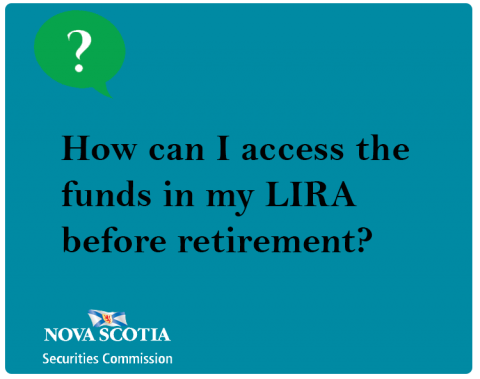Submitted by nsscadmin on

We spent the last few weeks talking about LIRAs and LIFs. That left readers wondering about how they can access the funds in a locked-in retirement account. The word “locked-in” in the name tell that your money can’t simply be withdrawn whenever you want. However, there are a few specific situations in which you are allowed to unlock a locked-in retirement account. These specific situations vary per province. We’ll be outlining the ones in Nova Scotia, so if you’re in a different province make sure to check your province’s specific locked-in account rules and regulations. The information can also be found on the Nova Scotia government website pension faq
- Age 65 and Small Total Entitlement
A person age 65 or older may unlock locked-in pension funds if the sum of their entitlements in every locked-in retirement account, or life income fund subject to pension legislation, is less than 50 per cent of the year's maximum pensionable earnings (YMPE) under the Canada Pension Plan.
- Unlocking for Life Expectancy of less than 2 years
Your locked-in retirement account or life income fund contract may allow for the withdrawal of a lump sum of locked-in pension benefits due to a shortened life expectancy (less than 2 years).
- Non-Residency
You may be entitled to withdraw all or part of your locked-in pension fund, if you are non-resident of Canada as determined by the Canada Revenue Agency. You can apply after you have been out of the country for at least 24 months.
- Financial Hardship
You may be entitled to withdraw some of your locked-in pension funds due to financial hardship. You may qualify if you have medical expenses that are not reimbursed from any other source, if you are facing foreclosure on your mortgage, if you are facing an eviction from your rental property, or if your income is below 66 2/3 percent of the year’s maximum pensionable earnings (YMPE) under the Canada Pension Plan.
To see if you qualify for any of these specific situations, or for more information on locked-in accounts contact the Nova Scotia Pension Regulatory Division. Their contact information can be found on their webpage.
